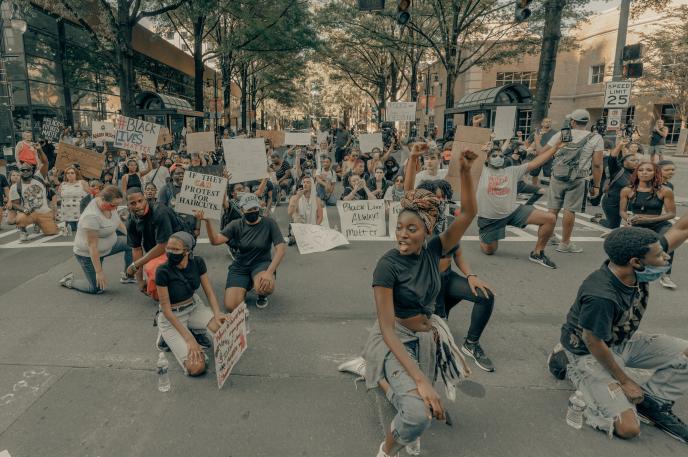
A history of racial injustice and student activism
August 17, 2021
This blog was written as part of Charlotte Mecklenburg Library's Black Lives Matter program initiative. Learn more about the program and corresponding events here.
Historically, the Black Lives Matter movement has always seen a rise in student activism. Ever since the movement started in 2013 after the death of Trayvon Martin, students have formed branches of the movement to raise awareness with notable examples including the Black Lives Matter Youth Coalition and The Youth Vanguard. In 2016, fatal police encounters involving Alton Sterling and Philando Castile caused an eruption of protests, and during this time, a spike in student activism in matters related to racial justice occurred. Later, in 2020 following the death of George Floyd, student activism reached levels that hadn’t been seen since the 2016 Black Lives Matter protests. However, student activism regarding racial justice can be traced to events preceding the Black Lives Matter movement to the beginnings of the civil rights movement.
In 1925, students at Fisk University protested for ten weeks to speak out against the school president who had refused to start a chapter of the NAACP. In 1940, nearly 2000 students protested New York University after pulling a Black player from the football roster. These two events spurred a series of student-led protests regarding civil rights in the ’60s. In 1960, four Black students organized the Greensboro sit-ins, which continued for six months. Similar actions also took place during the Brown vs. Board Supreme Court Case wherein students protested in favor of school integration. In 1963, one of the most significant civil rights actions in history took place. Nearly 250,000 students staged a boycott in Chicago protesting segregation in schools. Of those involved, 20,000 students marched to the Chicago Board of Education demanding equal resources for Black children. During the following year, in 1964, 450,000 Black and Puerto-Rican students refused to attend school for a day, boycotting racial imbalance and lobbying in public schools. Although the movement failed in forcing the school board to take immediate reform, it remained one of the largest demonstrations of the civil rights movement and eventually put an end to de facto segregation.
Nearly 50 years later, student activism plays a large part in racial justice initiatives and Black Lives Matter. Student-led groups such as the Youth in Chicago Education (VOYCE) were formed to create a youth alliance surrounding issues such as equal education and racism. In 2015, the Illinois Senate passed a VOYCE Senate Bill regarding school discipline practices, eliminating zero-tolerance punishment, minimizing suspension and expulsion and more. Furthermore, many students have been calling attention to racist environments in school and college campuses in the wake of the Black Lives Matter movement. School newspapers have been created to inform peers about racial injustices on campus and nationwide. By spreading information about inequality, students have organized protests with over 1,000 students and speak with large news organizations about their goals for justice.
With youth activism being on the rise, they are not without critics. Many adults struggle to see younger activists as equals, claiming that their lack of experience makes them less impactful. Despite such setbacks, young activists and students have played an important part throughout history in racial justice initiatives. The number of groups and protests created by youth continues to increase. In modern days, youth activists have cultivated mass followings on social media, calling attention to racism and police brutality and creating events to help victims of such situations. With their knowledge of technology, social media, and the historical legacy of the civil rights movement, student activism continues to be at the forefront of the Black Lives Matter movement.
--
This blog was written by Medha Kowndinya, a sixteen-year-old rising Junior at Ardrey Kell High school.
